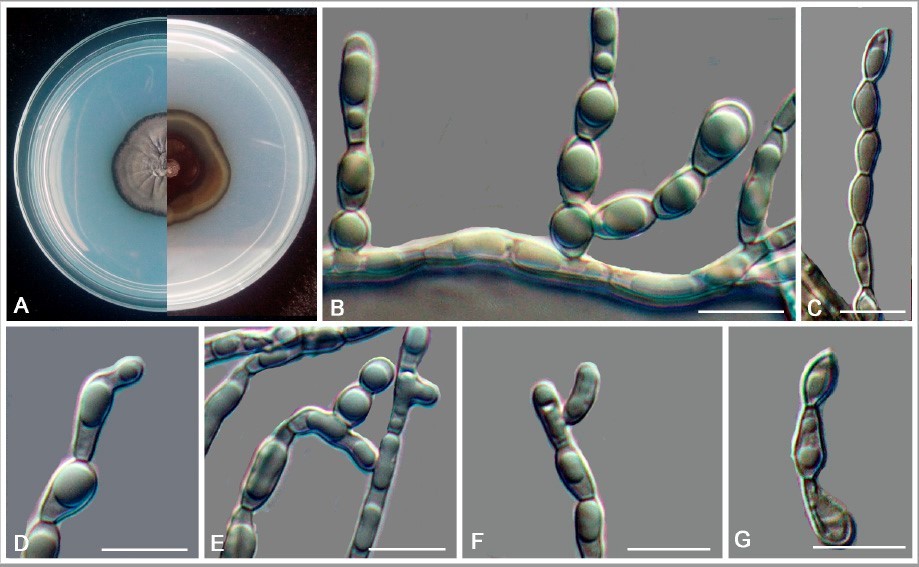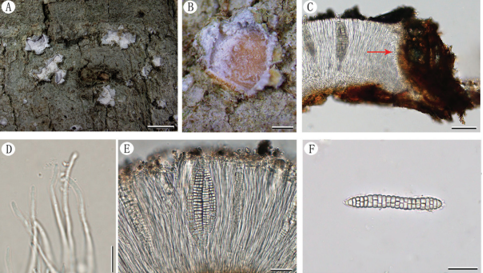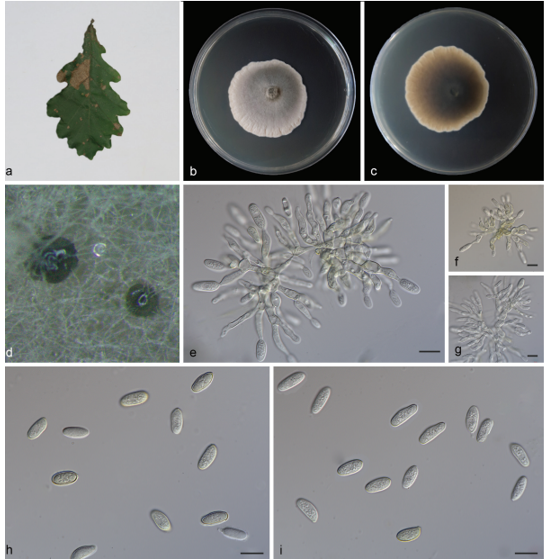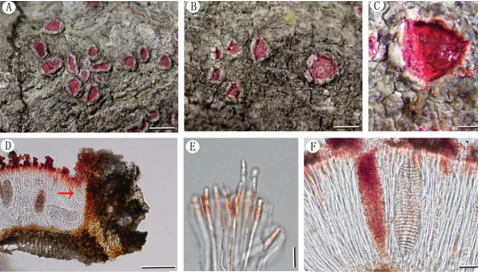Cladophialophora tengchongensis W. Sun, L. Su, M.C. Xiang and X.Z. Liu, sp. nov. 2020
MycoBank MB 824206
Holotype: China: Yunnan Province: Tengchong, Tengchong Volcano National Geopark, 25◦130 N, 98◦300 E, 2000 m a.s.l., from rock, 28 April 2011, Lei Su, (HMAS 265607 (dried culture)–holotype and CGMCC 3.15201–ex-type culture).
Morphological description
Hyphae smooth and thin-walled, septate, hyaline to pale olivaceous, composed by cylindrical to elongate cells, guttulate, branched, 1.9–4.0-µm-wide. Yeast cells absent. Conidiophores lateral or terminal, pale olivaceous, smooth and thin-walled, composed of ellipsoidal, fusiform, or subcylindrical cells (Figure 18B–E,G). Conidia one-celled, forming long branched chains, hyaline to pale olivaceous, ellipsoid to fusiform, 4.2–10.6 × 3.1–5.5 µm (x = 6.6 × 4.8 µm, n = 20) (Figure 18F).Culture characters: Colony on MEA growing slowly, attaining 28-mm-diam., after four weeks at 25 ◦C. Colony surface raised centrally, pale gray to deep-olivaceous gray, flat and glossy near the periphery, zonate, with margin entire; reverse olive-brown to sepia (Figure 18A). Mycelium growing into the agar. No diffusible pigment produced. Minimum 4 ◦C, optimum at 20–25 ◦C, and maximum 28 ◦C.
Habitat: from rock
Distribution: Tengchong (Yunnan Province, China).
GenBank Accession:
Notes: C. tengchongensis is phylogenically close to C. chaetospira (Figure 4). However, those two species can be easily distinguished by conidial morphology; conidia of C. tengchongensis are one-celled and measure 4.2–10.6 × 3.1–5.5 µm; those of C. chaetospira are 1(-3)-septate and measure 25–30 × 3–4 µm [69].
Reference: Wei Sun , Lei Su , Shun Yang et al.
Cladophialophora tengchongensis (CGMCC 3.15201). (A) Forward (left) and reverse (right) of colony on MEA. (B–G) Conidiophore and conidial chains. Scale bars: (B–G) = 10 µm.









